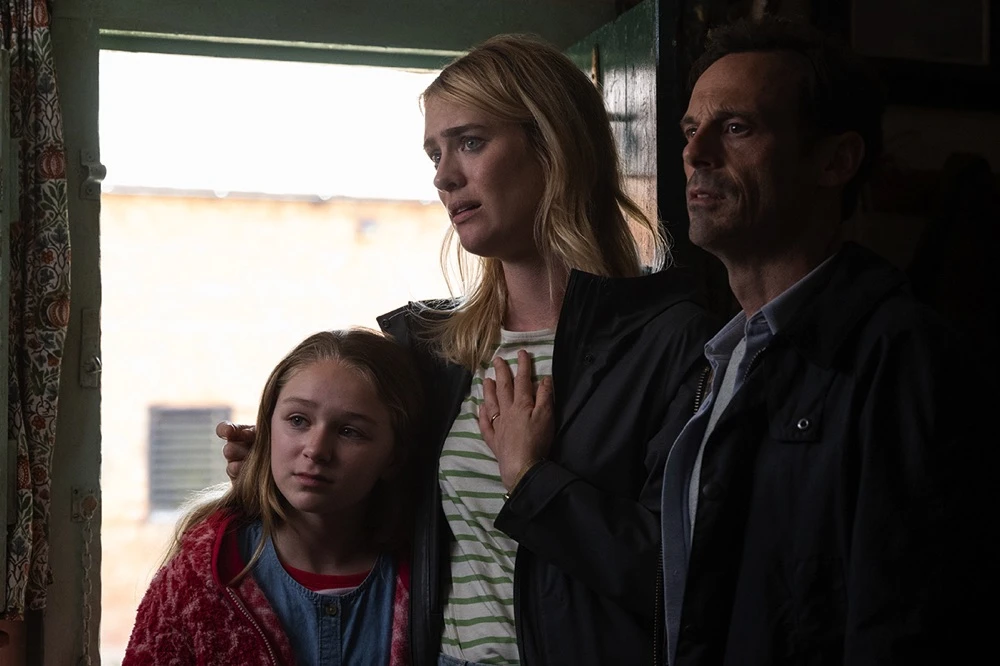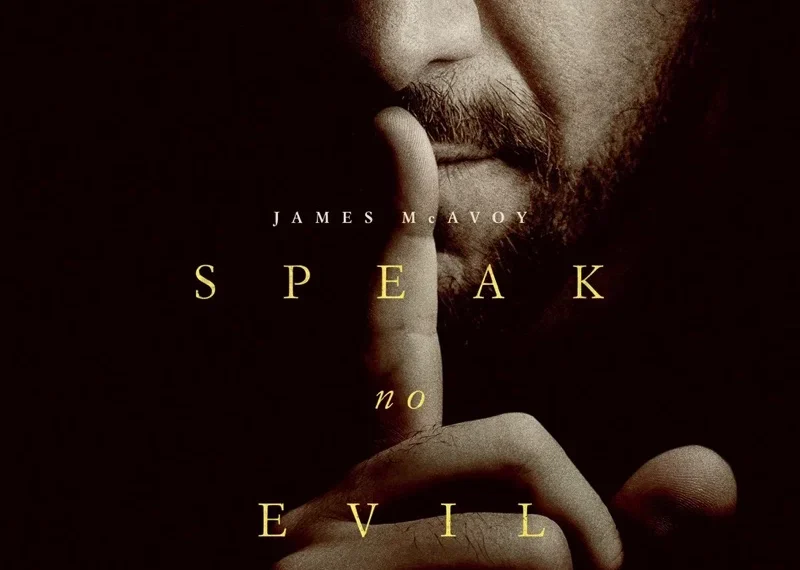Cast: James McAvoy, Mackenzie Davis, Aisling Franciosi, Alix West Lefler, Dan Hough, Scoot McNairy
Genre: Drama, Horror, Thriller
Director: James Watkins
In Irish Cinemas: 13th September 2024
It’s no secret that Hollywood often remakes foreign films, tailoring international stories to fit its own narrative and stylistic preferences. These adaptations usually take years to get greenlit or hit the big screen, but that’s not the case with Speak No Evil (2022), a Danish thriller directed by Christian Tafdrup. Despite being released only two years ago, the film is already seeing a Hollywood remake produced by Blumhouse. This rapid turnaround raises the question: is the 2024 version of Speak No Evil merely a rehash of the original? Or does it succeed in introducing something fresh and distinct while keeping the core premise intact?
Directed by James Watkins, Speak No Evil (2024) follows the harrowing journey of the Dalton family, an American couple and their child, who relocate to the United Kingdom for a fresh start. Eager to explore their new life, they embark on a vacation to the scenic region of Tuscany, where they encounter a seemingly charming English family. After a brief, friendly exchange, the English family invites the Daltons to join them for a relaxing weekend at their countryside estate. However, what begins as a serene getaway in a picturesque setting quickly descends into a horrifying ordeal as the Dalton family finds themselves trapped in a web of terror and deception. What initially appeared to be a casual, friendly invitation transforms into a fight for survival in this suspense-filled thriller.

James McAvoy. It’s a name that brings undeniable weight to Speak No Evil (2024), not just for his commercial draw but for his commanding presence on the screen. In this film, McAvoy steps into the role of a deeply unsettling character whose menace is carefully veiled beneath a surface of charm and civility. His performance thrives on subtlety—constantly suppressing the darker aspects of his character to maintain a facade of warmth. But when the mask slips, McAvoy unleashes that darkness in chilling, unexpected bursts of horror. Director James Watkins masterfully navigates this duality, crafting a captivating and terrifying character. As viewers, we’re drawn to McAvoy’s seemingly kindhearted persona, even as we sense the lurking danger beneath. It’s a delicate balance that Watkins and McAvoy execute with remarkable precision—creating a portrait of a man who hides his monstrous nature behind a carefully constructed mask, only to reveal it in the most nightmarish of moments.

James McAvoy is just one of the many tools Watkins employs to build an atmosphere of tension, though it’s interesting how this tension is often cleverly masked. While it’s clear early on that something is amiss within the family, the director skillfully deceives us by presenting events from the viewpoint of the protagonist, Ben Dalton (played by Scoot McNairy), who remains in denial about the danger surrounding him. Yet, when Watkins shifts the focus to highlight these looming threats, it becomes unmistakable that things are bound to take a dark turn. Despite this growing dread, the film compels us to hold on to the hope that everything might resolve peacefully. This is mainly because, unlike the original version, the remake takes the time to develop its characters deeply. By giving each of them meaningful story arcs, the film creates a solid emotional connection with the audience, making us care deeply about their fate.

If Watkins decided to develop these characters further, it would inevitably require him to extend the suspense over a longer duration. As a result, the narrative tends to become overly drawn out, particularly during the second act, leading to a sense of prolixity. This extended focus slows down the pacing of the film, causing certain scenes to feel unnecessarily stretched, detracting from the overall momentum of the story.
The ending is particularly satisfying, not only because it brings a fitting conclusion to the overarching story but also because of how Watkins skillfully resolves each character’s arc. He allows them to grow and evolve as they confront their personal struggles and their collective challenges. While some may argue that the ending of this remake is “less bold” or perhaps too conventional due to the clear stance it takes in the final act, especially in how it blends horror with the main plot, I believe the creative choices in both films are entirely in line with the narrative that has been building all along. Each decision feels purposeful and well-integrated, making the resolution natural and earned.

It is fascinating to compare the two Speak No Evil films and explore how they delve equally deep into the underlying themes despite employing different narrative approaches. Both films subtly address the importance of taking decisive action and assertively confronting challenges. By analysing them side by side, we can uncover how each story, in its unique way, emphasises the need for self-empowerment and the consequences of inaction when faced with personal or external conflicts. Through their distinct methods, the films offer a shared reflection on the agency’s role in overcoming obstacles.

Speak No Evil stands apart from the typical remakes that replicate their source material. Director James Watkins infuses the film with his own distinct vision, crafting a chilling, tension-filled narrative that resonates on its own terms. While he adopts a more direct and familiar storytelling approach tailored to a broader audience, Watkins successfully maintains the intrigue and depth of the original Danish version. His interpretation offers fresh insights and intensity, making the film as compelling as the source material without feeling derivative.
Overall: 7/10


















